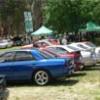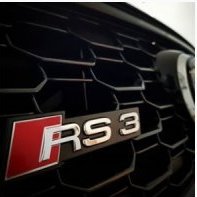Three Layer Paint
Announcements
-
Similar Content
-
Latest Posts
-
This is the GTR fuel pump. Yellow shows 12V, orange shows earth. The ECU provides the earth to activate the fuel pump relay. The ECU side of teh relay will pull low when the ECU activates. This is the RB20 fuel pump. Almost the same, but a little simpler. You can see I indicated (above) where the 12V line goes down to the RB20 diagram on the overall diagram, whch shows both RB26 and RB20. This is where I show it coming in on the RB20 diagram below. You can see that the dropping resistor is handled differently. When the fuel pump control is not providing earth to the pump, the pump earths through the dropping resistor and thus runs at lower voltage (some is wasted over the resistor) and runs slower. I showed that "not 12V and not quite earth" portion of the wiring in a paler orange. The rest of the wiring that I did not colour on that little section below the pump would be orange when the fuel pump coontroller is providing earth. This drop is handled inside the fuel pump controller in the GTR. Regardless, you can see where 12V is supposed to be, where earth is supposed to be. The key on prime is via the ECU providing the pump for only a few seconds the switching off. You should be able to see that happen.
-
Yeah so when you turn key to IGN the fuel pump should run for a few seconds. If you find the fuel pump relay (and have a multimeter, and a second person) to can check the relay inputs. One trigger pin should be either fully earthed The other trigger pin should get 12v from the ECU for say 3 seconds when you turn key to IGN, and at all times that key is at START (note, I said this from memory, it may be the other way around, ie one pin always has IGN 12v and the earth has continuity to earth when you turn the key) One Pin should have a good battery voltage The last pin goes to the fuel pump + Also note that if the power to the relay is good, and the relay is working, it is worth checking the pump has a good earth too. There is a computer in the standard system that increases the earth resistance to slow down the pump when not required, pretty old school and it may have failed
-
All this talk about fuel and fancy ECUs, meanwhile my poor old R32 has neither.... When the ignition is turned on, should there be power running o the fuel pump constantly or just for the few seconds it usually takes to prime the pump? About to go have another look at it, have watched some YouTube vids on how to use a multimeter and looked at some wiring diagrams but really have NFI what I'm looking for because electricity is invisible
-
Yuh....but weren't all the supertourers, except maybe the Audis, FWD? I don't recall any of the others being AWD.
-
They ran them in Oz Super Tourers too https://www.supertouringregister.com/register/vehicle/212/ (I'm so old I remember racing with Matthew Fox) They ran them in Oz Super Tourers too https://www.supertouringregister.com/register/vehicle/212/ (I'm so old I remember racing with Matthew Fox)
-







Recommended Posts
Create an account or sign in to comment
You need to be a member in order to leave a comment
Create an account
Sign up for a new account in our community. It's easy!
Register a new accountSign in
Already have an account? Sign in here.
Sign In Now